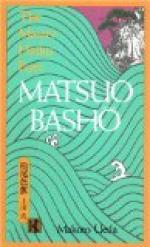|
This section contains 4,642 words (approx. 16 pages at 300 words per page) |

|
SOURCE: “Bashō,” in A History of Haiku, Volume 1: From the Beginnings up to Issa, The Hokuseido Press, 1963, pp. 105-29.
In the following excerpt, Blyth discusses the variety and originality of Bashō's haiku, noting that the poet's sensitivity to nature, love of beauty, and warmth of heart show through in his verses. This essay originally contained ideographic characters, which have been silently removed for this reprinting.
Bashō wrote Furu-ike ya, the model verse of the Bashō School, in 1686. The school came to an end with the death of Hajin, the teacher of Buson, 1742. The Genroku Period was from 1688 to 1703, but Bashō died in 1694, and thus his great poetic work was all done at the beginning of Genroku. Until 1686, when Bashō was 41, he had written only mediocre verses, and for only eight or nine years, the last years of his life, did he write real poetry. In this respect...
|
This section contains 4,642 words (approx. 16 pages at 300 words per page) |

|


